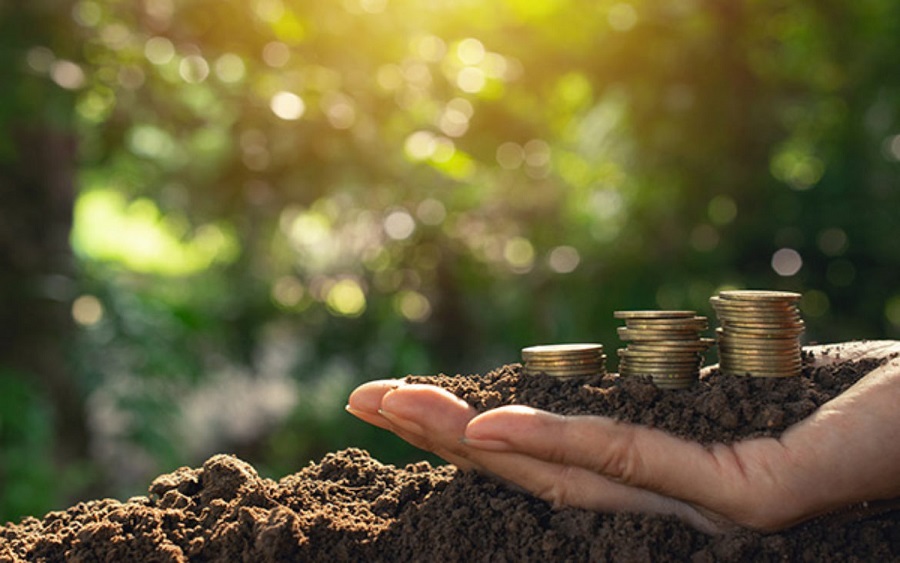Imagine if you bought two plots beside the Transcorp Hilton Hotel in 1980 in the highbrow Maitama district of Abuja and sold in 2020, what return would you have made?
That land in Abuja in 1980, in Nigerian parlance, was “virgin” i.e. undeveloped, no site and services, you could not live there. It had no utilities like public water or roads, so the price of that plot of land in Abuja reflected that lack of demand. However, as we all know, if demand starts to outstrip supply of any commodity, prices will rise. As demand for land in Abuja FCT started to grow, the price of land in Abuja also went up.

Land is a recommended asset class. Although it may offer no current income, it allows an investor trap in significant capital appreciation potential.
There are two ways to invest in land: buying to flip, i.e. buying land with the clear intention of trading your holdings, i.e., flipping to capture current capital appreciation on that land; or buying to hold, i.e., buying to hold your piece of real estate at a lower cost or discount today, i.e., off plan.
[READ MORE: Is investing in commodities only for the brave?)
The difference really is the gestation period of your investment. Whatever your objective, your profit on any asset that does not pay a dividend is based on the purchase price the investor pays. The lower the purchase price, the larger your potential margin for profit in future is.
Let’s talk about trading, to flip land means you buy land in an area where you envisage development will occur in future. You take a position, wait, then sell as demand and prices rise. Land flipping is great when the economy is booming as that creates more disposable income leading to higher demand. When buying land, be careful what source of financing to use, It’s very risky to trade land with borrowed funds. This is because you are paying interest on that cash and have no way of determining when you can offload. In technical terms, you’re using an interest-bearing liability to fund a non-interest generating asset.
If you want to flip land, consider asking the seller for a time option to pay in full for the land, then try to sell the land and make payments from sales return, before making payments. Thus, don’t acquire land with debt without securing a buyer, if your intention is to sell the land; you may end up wiping your potential profits by holding and paying interest. You can also avoid interest by creating an investment club or partnership, and using Other People’s Money (OPM) to create a land fund. You can also negotiate an installment payment where you debit your discretionary cash annually to pay for your share of the land within the property owned by the land fund. Crowdfunding land purchase can eliminate interest cost and allows you build up a nice portfolio with real estate at the base, but with no interest cost.
Remember as always, the value of land is not only tied to a location but title as well. Ensure you get a lawyer to verify all land titles BEFORE you invest in land. Also note that If you buy land in a choice area and its value is high but you cannot convert that value to cash, then that investment is illiquid. You want to ensure you stay liquid in a weak economy.
With buying land to hold, you are investing in the asset “off plan”, i.e., at a discounted value, in the hope that the value will rise in future to reward your invested capital. With flipping, you are buying low to sell high, with off plan, you are buying an asset already priced high at a discount. It’s important you factor in the opportunity cost of tying down your cash for a long period.
Buying land is simply a subset of real estate investing as a whole and in markets like Lagos State, it’s difficult to even find “virgin” unencumbered land to buy at meaningful discount to future prices, so let’s expand our investing universe.
[READ ALSO: 3 financial principles on debt, income & productivity)
What other ways to Invest?
REITS: Real Estate Investment Trust, like the UPDC REIT, are investment coys set up primarily to invest in income-generating real estate opportunities. These could be residential or commercial opportunities. REITS must generate and distribute dividend to investors, that’s what makes them unique. Thus, investors enjoy not just current income but capital appreciation as well. The UPDC REIT has a dividend yield of about 17.81% as at March 5th. Pretty good.
ETF: It’s also possible to invest in specific or general international markets via Real Estate Exchange Traded Funds. The Vanguard Global Real Estate Index Fund VNQI, for instance, gives the investor exposure to global real estate markets outside the US with over 425 individual holdings across many countries. With an expense ratio of 0.12%, this fund has return on average of 5.31% in USD terms. Not bad, considering US interest rates fell below 1%-week one March 2020.

Crowdfunding: Crowdfund and FINTECH have combined to offer real estate investors the diversification of REITS, with the higher returns of Private Equity, Companies like FundRise operate online investment platforms that allow any investor invest in private real estate market, i.e. the unlisted market. FundRise also allows an investor tailor a real estate Portfolio to suit investment needs. Thus, an investor can invest $500 and create a plan with 50% growth REIT and 50% income REIT.
According to FundRise, returns are higher in the private markets (12.3% in 20 years as compared to 8.2% in public US markets).
In closing, real estate investing can be capital intensive but rewarding. REITS can offer capital stability with current income. There are opportunities locally as well as internationally, which has made investing in real estate not just cheaper but more rewarding. Ensure you have real estate as a part of a well-diversified portfolio.























